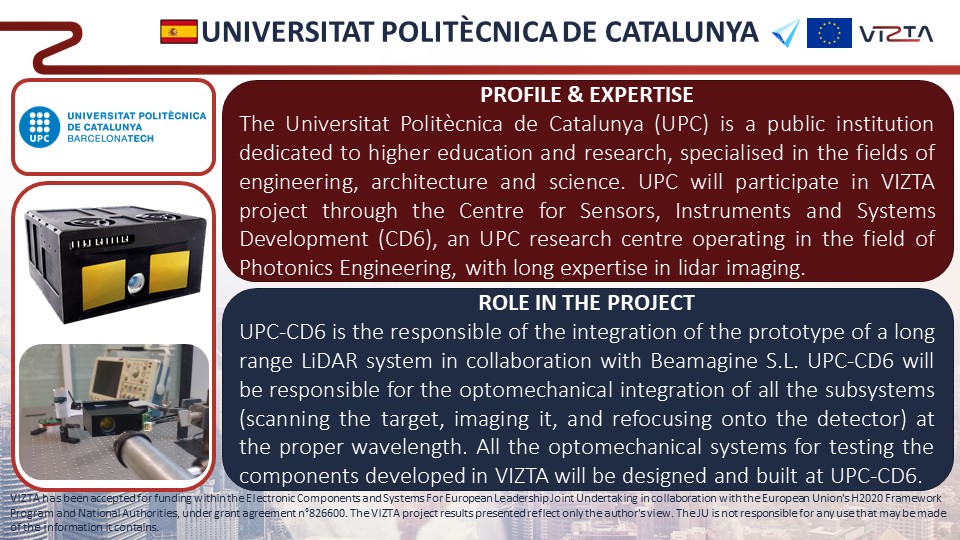Profile & expertise
The Universitat Politècnica de Catalunya (UPC, http://www.upc.edu) is a public institution dedicated to higher education and research, specialised in the fields of engineering, architecture and science. UPC is among the largest Spanish technical universities, with more than 2.600 researchers and 30.000 students, covering research in all the main engineering fields. Research at UPC is organized in 194 multidisciplinary groups plus 7 research institutes. The UPC is the best technical university in Spain according to the QS World University Rankings (WUR). According to the National Taiwan University (NTU) ranking, the UPC is nowadays within the best 100 universities in engineering worldwide. The UPC is present in over 130 countries in five continents thanks to the agreements and alliances with prestigious universities and institutions all over the world, promoted by the UPC Abroad programme. UPC is currently involved in more than 100 European projects, acting as a coordinator in more than 20, and also is a member of the main international research and education networks, and coordinates five UNESCO chairs.
UPC will participate in VIZTA project through the Centre for Sensors, Instruments and Systems Development (CD6) (http://www.cd6.upc.edu). CD6 is an UPC research centre operating in the field of Photonics Engineering and currently co-holding the Technical Secretariat of Fotonica21, the Spanish Platform for Photonics. Sited in the Greater Barcelona region, the research activities developed at CD6 are aimed at creating value through innovation and entrepreneurship. Market-oriented research has enabled to the licensing of patents to the industry, to serve over 200 industrial clients in the last 10 years, and also to the creation of more than 11 spin-off and start-up companies that manufacture and market new photonics-based products in different sectors. 50% of the royalty income of the complete UPC comes from UPC, with less than 1% of the researchers.
CD6 has a staff of about 40 people, and its research is interdisciplinary by nature, with optical, mechanical, electronics and software engineers working together in complementary research lines enabling turnkey prototypes to be delivered to our contractors. The standard ratio for the funding of CD6 coming from industrial projects stays around 65% in average, with peaks of up to 75% depending on the year. International industrial research contracts have been developed in markets like automotive (FICOSA, Autoliv), transport (Docter, Faurecia), biomedical (Carril, Visiometrics), electronics (Fagor, Samsung, Sony), or instrumentation (Rayteq, Indra, Telstar). CD6 has an ISO9001 certified quality system and is recognized as reference TECNIO centre for innovation by the Catalan Agency for Competitiveness, ACCIÓ.
Beyond its natural expertise in optics and photonics engineering, the Centre has incorporated a number of engineers in close fields (mechanics, electronics, software) which enable to build operative units with engineers used to work in such environments.





